Google the route through Ohio from Cincinnati to Wooster to Columbus to Findlay to Toledo, and you’ll find that it takes about 50 turns, 460 miles and some nine hours of driving.
I know, because I made this trip the week of March 6-12 to conduct a series of interviews and other meetings for Site Selection magazine and its publisher, Conway Inc.
When I set out on this road trip, I thought I’d learn more about the site selection factors that led companies to announce 517 expansion projects in Ohio last year, second only to Texas. What I discovered, however, was that Ohio companies aren’t just growing; they’re changing the world of commerce and how we as consumers interact with it.
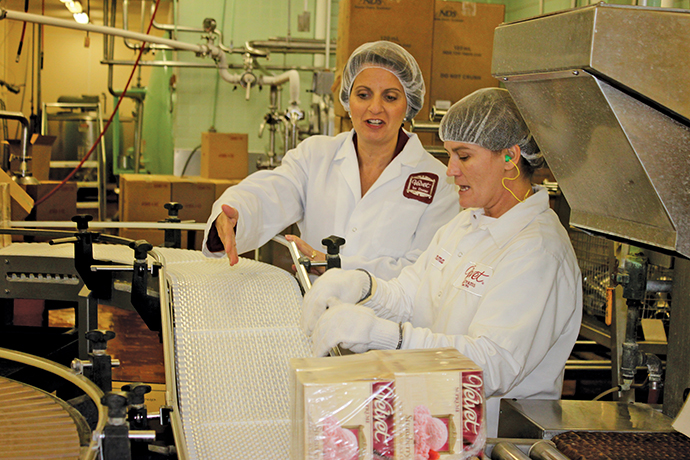
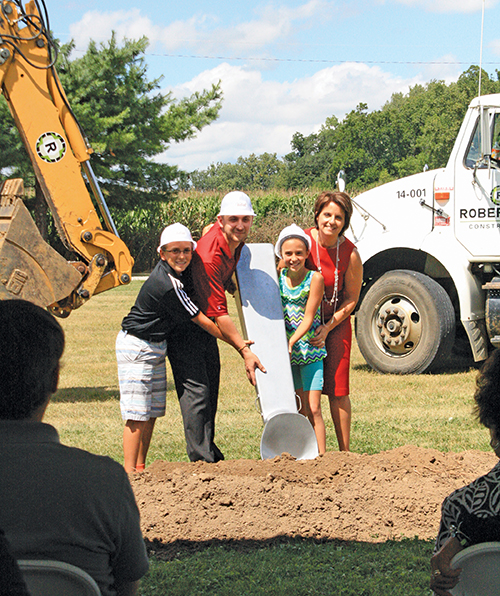
From the creators of Tom + Chee in Cincinnati to the Charles Schwab worker who invented Craigslist after graduating from Case Western Reserve University in Cleveland, Ohioans are leaving an indelible mark on every aspect of the consumer goods supply chain.
Take a bite out of the Krispy Kreme grilled cheese donut at Tom + Chee and you’ll see why. It’s insanely good, and we have two guys in Cincinnati to thank for it.
Founders Trew Quackenbush and Corey Ward began serving grilled cheese sandwiches to construction workers under a tiny tent in Fountain Square in downtown Cincy. Exposure and an investment deal on ABC’s “Shark Tank” TV show gave them their big break, and in 2013 the Brand Innovators Made in America Summit named Tom + Chee one of 25 “Brands to Watch.”
Twenty years earlier, Craig Newmark put his Case Western Reserve education to good use while toiling at Charles Schwab in San Francisco. The former Clevelander created Craigslist while the Internet was still an infant, and ushered America into the era of e-commerce.
Is that what it means to be an Ohioan, or is it something more?
The Urban Dictionary defines an “Ohioan” as someone who:
- Knows all four seasons by heart: Winter, Still Winter, Almost Winter and Construction.
- Lives less than 30 miles from some college or university.
- Knows what a buckeye really is.
- Knows if other Ohioans are from southern or northern Ohio as soon as they open their mouths.
- Can spell the words Cuyahoga, Olentangy, Bellefontaine, Tuscarawas and Wapakoneta, and knows to double the “n” in Cincinnati.
- Has ever had to switch from “heat” to “A/C” in the same day.
- Knows what “pop” is.
For one week in March, I crisscrossed the Buckeye State in search of what it means to be an Ohioan. I thought that if I just spent enough time in the state, I might learn why so many corporate investors keep coming back.
What I gleaned was a lot more. From the big cities of Cleveland, Cincinnati and Columbus to the small towns of Findlay, Wooster and Utica, I saw evidence of the same kind of ingenuity that built Tom + Chee and Craigslist into category-killers.
In this quest and the follow-up interviews I conducted in the month following the road trip, I saw signs of how Ohioans are taking the state’s rich legacy of agriculture and manufacturing and remaking it into new forms of commerce.
Top 10 Ohio New Plant Projects of 2015
| Company | City | Product | New/Exp | Type | Investment (US$M) | Employees |
|---|---|---|---|---|---|---|
| Honda Motor | Anna | VTEC Turbo Engines | E | MF | 340 | |
| Amazon.com, Inc. | New Albany | Retail Merchandise | N | DT | 300 | 25 |
| Procter & Gamble | Mason | Beauty Products | N | RD | 300 | |
| Sofidel America Corp. | Circleville | Sanitary Paper Products | N | MF | 284 | 310 |
| Honda of America Mfg., Inc. | Marysville | Automobile Manufacturing | E | MF | 210 | |
| Advics Manufacturing Ohio, Inc. | Lebanon | Motor Vehicle Brake Systems | E | MF | 150 | 260 |
| Fuyao Glass America | Moraine | Automotive Glass (2) | N | MF | 130 | 750 |
| Honda of America Mfg., Inc. | East Liberty | Automobile Manufacturing | E | MF | 85 | |
| Lubrizol Corporation | Painesville Township | Chemical Additives | E | MF | 84 | 24 |
| Nature Fresh Farms Inc. | Delta | Greenhouse Vegetables | N | MF | 79 | 153 |
Source: Conway Projects Database
I witnessed it in the makers of ice cream, the sellers of vintage sports memorabilia, and the builders of successful cities. I observed it in the leadership skills of public officials and economic developers who take unorthodox approaches to business development. And I found it in the words of academic leaders who do more than pay lip service to incubation.
Ride along with me in my rented 2016 Dodge Durango — made just north of Ohio at the Jefferson North Assembly Plant in Detroit — and hear what they had to say.
The Ice Cream Maker in Utica
Located in Central Ohio along the north fork of the Licking River, Utica boasts a population of 2,132 residents. About 125 of them work at the Velvet Ice Cream Company located at Ye Olde Mill just south of town. Based there for over 100 years, it’s always been run by Dagers.

“We are a strong agriculture state. There are a lot of ice cream manufacturers here in Ohio,” says Luconda Dager, president and fourth-generation owner of Velvet Ice Cream. “Ohio is right in the middle of the Midwest. We are just five or six hours from Chicago, and about the same distance to New York. This is the perfect place for us to be.”
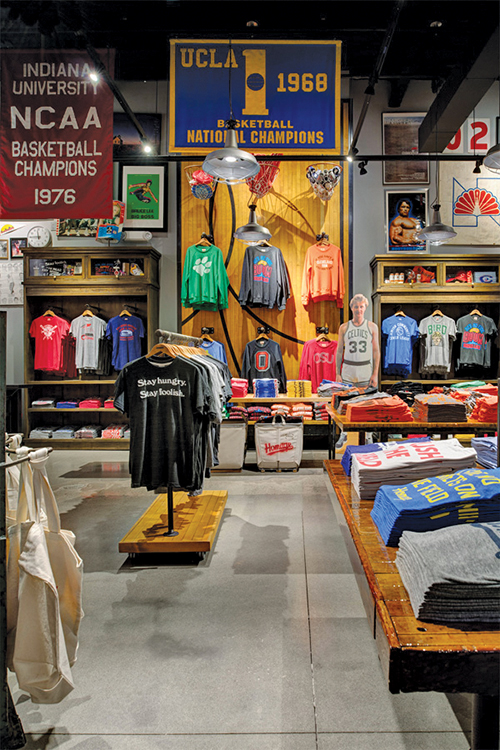
Velvet broke ground recently on a $3-million, 22,000-sq.-ft. (2,044-sq.-m.) expansion that will give the company a new cold-storage facility. “That will allow us to be much more efficient when we get orders and ship them out via tractor-trailers,” says Dager. “We had maxed out our capacity, and this allows us to bring everything into one central warehouse.”
Velvet is unique in that it doesn’t just make ice cream; it showcases it. “We do free factory tours Monday through Friday. We provide tour guides,” says Dager. “Guest relations are critical to what we do. We feel that if we can get consumers to the plant and see the extra steps we take, there will be an emotional connection between them and the brand. It is not so much about price anymore. It is about the passion for the product.”
She sees that same passion in the people Velvet hires. “A lot of them come to us from living and working on a farm,” she notes. “They bring that same work ethic with them when they come to our plant. That is another thing that keeps us in Ohio.”
The Academic Strategist in Cleveland
About 112 miles north of Utica, Case Western Reserve University in Cleveland serves as a greenhouse for growing ideas. Established in 1826, the school today educates 5,600 undergraduate students and 6,500 graduates and professionals.
Its graduates include the likes of Henry Dow, Arthur Parker, Craig Newmark and 15 Nobel Laureates. CRWU and its alumni gave birth to the walkie-talkie and NASA. Today, faculty and student researchers work to stop the spread of cancer and Alzheimer’s.
“We oversee a $400-million-a-year research budget,” says Anne Borchert, assistant vice president of corporate relations and strategic products at CWRU. “We work closely with industry partners. We specialize in advanced materials research, technology and healthcare. We even created a makerspace of 50,000 square feet [4,645 sq. m.] and called it the Sears think[box]. Our motto is to think beyond the possible.”
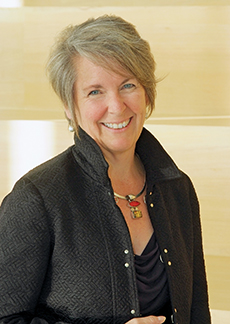
Borchert, who speaks with conviction about the mission of CWRU, says that think[box] is the largest makerspace on an academic campus in the country. “Our goal is to create new technology and new devices. It is open to the public. We wanted this to be a community space. Anybody can come in. Our goal is to help companies start and help technologists move their products forward. Our students have launched about a dozen companies already.”
Last year, CWRU received about 23,000 applications for the 1,200 open spots in the freshman class, and the demand is only increasing, notes Borchert. “We just opened the University Campus Center and a new performing arts center. A new Health Education Campus just broke ground. It is being built in partnership with Cleveland Clinic. At University Circle, we have the largest amalgamation of cultural institutions, healthcare and education of any place in the country. It is a unique ecosystem. And it will remain unique because we try to stay ahead of where we need to be. This ensures that we remain relevant and have a secure future.”
The Nostalgic Sports Fan in Columbus
Day three of my journey took me to Ohio’s capital city, Columbus, where diehard fans of Ohio sports teams may be forgiven if they mistake Homage for Heaven.
If you grew up in Cincinnati, like I did, during the era of the Big Red Machine, then names like Pete Rose, Johnny Bench, Joe Morgan, Tony Perez and George Foster aren’t just baseball greats; they’re sports deity.
Columbus-based retailer Homage taps into that timeless fan spirit by creating and selling vintage-inspired apparel including T-shirts, athletic wear and accessories. Launched in 2007 as an e-commerce site, Homage opened its first bricks-and-mortar store in 2010 and has continued to expand rapidly ever since. The company now operates four physical stores in Ohio and plans to open additional outlets beyond Ohio soon.
“We have stores in Easton Town Center and the Short North in Columbus, as well as Cincinnati and Cleveland,” says Rob Watson, director of retail operations for Homage. “We are in talks to add two more leases this year and another three store leases next year. Outside of the state, we plan to look at Pittsburgh, Detroit, Indianapolis, Chicago, D.C. and Philly.”
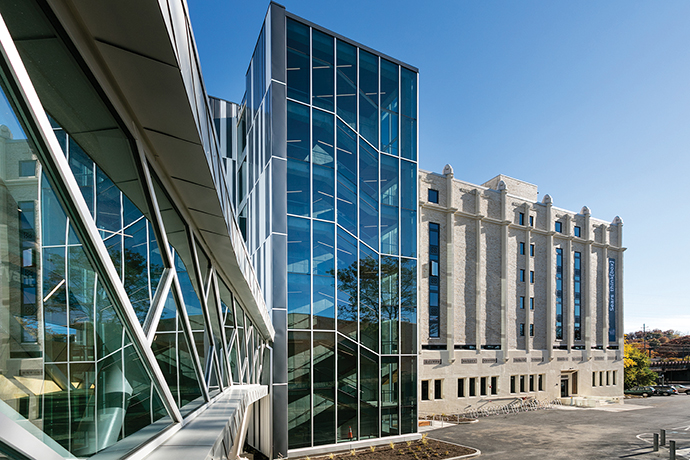
Watson says Homage likes Columbus because “it is centrally located. Half the US can get to Columbus in a six-hour drive or less. There is also a very diverse population here, and that makes it a great test market for retailers. Plus, getting the chance to open a store at Easton Town Center here was huge for us. If you are in the Midwest, it is the mall to be at.”
Watson admits that Ohio is the perfect fit for Homage because Ohioans are famous for being fiercely loyal to their sports teams.
Whether they cheer for the Reds, Indians, Bengals, Browns, Cavaliers, Blue Jackets, Crew, Buckeyes, Bearcats or another college team, Ohio sports fans rank among the most committed followers in America, says Watson.
“What we offer at Homage is a way to create those emotional connections with our customers,” he adds. “It is a way to connect generations. Our products tell nostalgic stories.”
The Mayor of America’s Top Small Town
Lydia Mihalik knows a thing or two about sports herself. As a basketball player at the University of Findlay, she was part of a rich tradition of sporting excellence in the Buckeye State.
Day four of my road trip took me to Findlay, a few minutes from Interstate 75 in Northwest Ohio, where I met Mihalik, who just 14 years after college has one of the more important jobs in her hometown. She’s the mayor.
She’s served in that capacity for the past four years. In each of the last two years, she’s helped lead Findlay to a rather prestigious designation: Top Micropolitan Area in the nation.
By securing more corporate facility expansion projects than any other micro area in America, Findlay has ranked as the country’s top small town for both 2014 and 2015. In 2013, Wooster in Northeast Ohio won the honor.
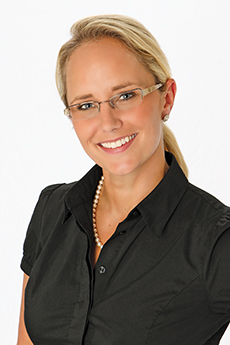
“When I ran for mayor in 2011, I had three things I wanted to accomplish,” says Mihalik. “One was to facilitate the development of a flood mitigation solution, which I realize is not something site selectors want to read about. Two was to promote economic growth, whereby we do our part to create an environment conducive for investment. This includes having our financial house in order so that we can replace aging infrastructure and add new. And three was to improve the way the city does business. There were efficiencies to be had and better performance relative to customer interaction that I knew we would need to achieve if we were going to be a competitive city in the country. I’m proud to say we’ve made significant achievements in all three of those areas.”
I asked her to describe the workforce of her native Hancock County, and her answer gave further insight into what makes Ohioans tick.
“The people of Findlay are resilient and hardworking Midwesterners,” she said. “They place a significant focus on family with an emphasis on achieving things together. I am continuously impressed by their spirit of service and love for one another. Findlay is a very caring community that continuously gives back.”
After a full day of presiding over the city’s business and joining her economic development team and this reporter for sushi and conversation at Japan West in downtown Findlay, Mihalik went home to her other job: mom to three young children.
The Marketer in the Queen City
My last stop in Ohio brought me back to my first, and to where my life began in January of 1964: Cincinnati.
Known affectionately to many as the Queen City, Cincinnati has come a long way since it was first settled on the banks of the Ohio River, directly across from Kentucky, in 1788. According to Site Selection, it’s the No. 4-ranked metropolitan area in the nation, recording 169 corporate expansion projects in 2015 (ahead of fifth-place Columbus, which had 108). On a per-capita basis, Cincinnati ranks first in the US.
And its competitive position is stronger than ever. According to KPMG’s just-released biennial Competitive Alternatives study, Cincinnati ranks as the No. 1 most cost-friendly city to do business of all 31 large metro areas in the US. Cincy’s favorable leasing costs and low property taxes contributed to its top ranking, which also took into account labor costs, facility and transportation costs, and utilities.
Johnna Reeder, president & CEO of REDI Cincinnati, shared some of the highlights of her region’s progress in a subsequent interview.
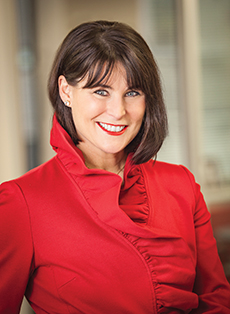
“Cincinnati ranks among the top five most competitive cities for aerospace, food and beverage, chemicals and plastics, transportation and logistics, and metals, according to Site Selection,” Reeder says. “Greater Cincinnati is over-indexed in four out of five McKinsey Game Changers: additive manufacturing, big data, talent and infrastructure. The region had a diverse range of projects in 2015 — and the beginning of 2016. We aren’t betting on just one industry to bring jobs and capital investment. This concept isn’t new. Cincinnati has long had a diverse economy, which helped it weather the 2008 recession better than similar cities.”
With recent expansions from Aprecia Pharmaceuticals, Barclaycard US, CDK Global Inc., CEMax, Reztark Design Studio, Tech Mahindra and Bosch Steering, Cincinnati is making its mark in multiple industries and not showing any signs of slowing, Reeder notes.
“Cincinnati has a history of making things,” she adds. “It is a startup hub that turns viable business ideas into real storefronts. The region is an incubator for ideas.”
I know that firsthand, because as a child I watched my uncle Ron McSwain co-found and later lead McSwain Carpets to become one of the most successful carpet companies in America.
It’s always been based in Cincinnati, and I doubt it will ever leave Ohio. I think that’s true because my uncle Ron found what I was looking for in Ohio, and he found it in 1969.
An excerpt from McSwain Carpets’ website does a pretty good job of summing up the company’s core philosophy: “There are a lot of people to thank for our successes — most importantly, our customers. We are grateful to them for allowing us to help make their home decorating dreams come true. We work hard to maintain our high standards and offer our customers the best possible product.”
The work ethic, humility, family focus and customer-first attitude of most Ohio companies come through in that one simple statement.
And you don’t get any more Ohioan than that.
Ohio:
Where Records Were Made to Be Broken
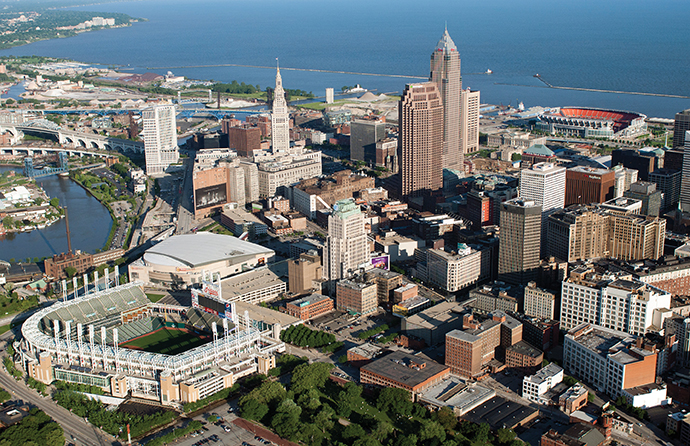
Major League Baseball hit king Pete Rose isn’t the only record-setting Ohioan. JobsOhio followed up its banner performance in 2014 by doing the equivalent of hitting it out of the park in 2015.
How Ohio’s 6 Regions
Performed in 2015
Regional Growth Partnership (Northwest Ohio)
| New Jobs | 2,940 |
| Retained Jobs | 13,356 |
| Capital Investment | $1.4 Billion |
Dayton Development Coalition (West Central Ohio)
| New Jobs | 3,136 |
| Retained Jobs | 11,157 |
| Capital Investment | $569 Million |
EDI Cincinnati (Southwest Ohio)
| New Jobs | 7,497 |
| Retained Jobs | 8,052 |
| Capital Investment | $1.2 Billion |
Team NEO (Northeast Ohio)
| New Jobs | 3,640 |
| Retained Jobs | 12,742 |
| Capital Investment | $687 Million |
Columbus 2020 (Central Ohio)
| New Jobs | 5,824 |
| Retained Jobs | 6,252 |
| Capital Investment | $1.9 Billion |
Appalachian Partnership (Southeast Ohio)
| New Jobs | 565 |
| Retained Jobs | 2,674 |
| Capital Investment | $977 Million |
2015 JOBSOHIO PERFORMANCE
| Total Projects | 330 |
| New Jobs | 23,602 |
| New Jobs Payroll | $1.1 Billion |
| Retained Jobs | 54,233 |
| Retained Jobs Payroll | $3.1 Billion |
| Total Jobs | 77,835 |
| Total Jobs Payroll | $4.1 Billion |
| Capital Investment | $6.7 Billion |
By almost any standard of measurement, the state of Ohio’s lead job development agency enjoyed its best 12-month period ever last year. According to the agency’s annual report, JobsOhio in 2015 announced 330 projects with companies that committed to create 23,602 new jobs for Ohioans and invest $6.7 billion in new capital.
“All three metrics are the highest levels achieved by JobsOhio in its history, and illustrate the state’s increased competitiveness through its attractive business environment and the strength of the JobsOhio economic development model,” said Andrew Deye, director of strategy for JobsOhio.
Deye emphasized that JobsOhio would not have secured these record results without the strong collaboration it received from state, regional and local partners.
Armed with a $2.5-billion state budget surplus, Ohio has added almost 400,000 jobs since the Great Recession and currently boasts the 21st largest economy in the world.
Still, notes John Minor, the president and chief investment officer of JobsOhio, every project applying for state incentives must earn and pay its own way. That is why 84 percent of all expansion projects receiving state assistance are “investment break-even” in their first year, he says.
“We approach each project as an investment that we make in an Ohio business,” he says. “Given the attractive qualities of this state, we are ‘all-in’ on Ohio’s economic future.”
For JobsOhio, the numbers have grown steadily in each of the last three years. Total projects in 2013 tallied 264, rising to 286 in 2014 and then to a record 330 last year. New jobs registered 17,857 in 2013 before climbing to 21,377 in 2014 and then to 23,602 in 2015.
Many of these projects came in the form of foreign direct investment. A notable example was The Sofidel Group of Italy. JobsOhio, Columbus 2020 and the Pickaway Progress Partnership all worked together to land a 1.4-million-sq.-ft. (130,060-sq.-m.) manufacturing facility for Sofidel in Circleville in Central Ohio. Sofidel, one of the world’s leading integrated paper manufacturers, announced plans last November to create 310 jobs at the plant when it opens on a 280-acre (113-hectare) greenfield site in 2017.
“With close proximity to key cities and a well-established logistics hub, the launch of a new greenfield investment in Ohio will significantly increase our production capacity,” said Luigi Lazzareschi, CEO of Sofidel Group.
“We approach each project as an investment that we make in an Ohio business. Given the attractive qualities of this state, we are ‘all-in’ on Ohio’s economic future.”
The investment marks Sofidel’s first integrated greenfield facility in the US. Founded in 1966, Sofidel currently operates subsidiaries in 13 countries with a total workforce of more than 5,200 employees.
In other FDI activity, Denmark-based Xellia Pharmaceuticals worked with JobsOhio, Team NEO and Cuyahoga County to acquire a site in Bedford in Northeast Ohio. The developer and maker of life-saving antibiotics plans to hire 170 workers when it opens the new facility within 24 months.
“The US is a very important market for us, and as a region with a strong manufacturing heritage and a uniquely skilled and specialized workforce, Bedford, Ohio, is an ideal location to expand our manufacturing capabilities,” said Carl-Ake Carlsson, CEO of Xellia.

